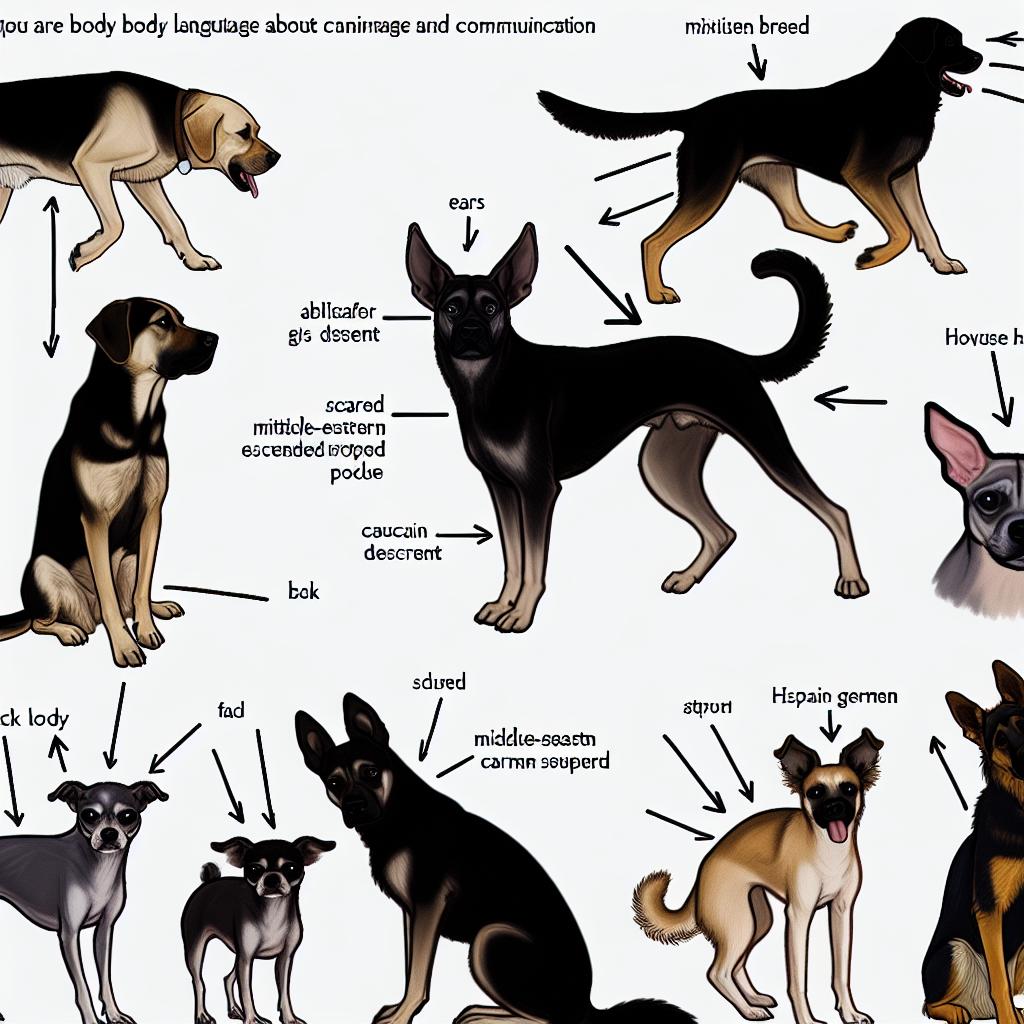
Dogs, often referred to as man’s best friend, possess an intricate system of communication that relies heavily on body language. Recognizing these non-verbal cues is crucial for developing a harmonious relationship and supporting the overall well-being of our furry companions.
Dogs predominantly communicate through a combination of body postures, facial expressions, and vocalizations. Each of these signals can convey various meanings, depending on the context in which they occur and the dog’s overall demeanor. Therefore, it’s important to observe a dog’s entire body to adequately interpret its intentions.
A dog’s body posture can offer profound insights into its emotional state. For example, a relaxed dog is likely to display soft and fluid movements, indicating comfort and contentment. Such a relaxed posture frequently includes an easy-going stance and gentle wagging of the tail.
In contrast, an alert posture suggests that a dog is focused. This posture is characterized by a more rigid stance, ears pricked forward, and wide eyes. These signals combined typically express a sense of curiosity or interest in their surroundings.
Additionally, dogs sometimes assume dominant postures to assert their confidence or control. This is often exhibited through standing tall with a high tail and direct eye contact. Such behavior can sometimes be mistaken for aggression, but it frequently serves as a simple indicator of a confident demeanor.
Conversely, a submissive posture is the opposite of dominant behavior. A submissive dog might lower its body, tuck its tail, and flatten its ears. This suite of behaviors generally indicates a desire to avoid confrontation or the acknowledgment of a higher-ranking individual within social hierarchies.
Apart from body posture, dogs convey a significant amount of information through their facial expressions. These expressions offer key insights into their emotions and intentions.
One critical feature is the eyes. Direct eye contact can suggest assertiveness or present a challenge, particularly if accompanied by dominant body language. In contrast, soft and relaxed eyes indicate the dog is comfortable and not threatened, often a sign of friendliness or acceptance.
Similarly, a dog’s ears provide clues to its mood. Erect ears might suggest interest or even potential aggression, particularly if the dog is alert to a possible threat or prey. However, if the ears are pinned back, it often signals fear, submission, or discomfort.
The mouth also reveals a multitude of emotions. A relaxed dog often has an open mouth with the tongue hanging out, signaling contentment or playfulness. However, bared teeth accompanied by a tense mouth and other aggressive signals usually mean the dog is not comfortable and might be feeling threatened or defensive.
Although body language remains the primary mode of communication for dogs, vocalizations like barking, growling, whining, and howling are critical components that enhance their expression repertoire. Understanding these vocalizations in conjunction with body language aids in interpreting a dog’s message more accurately.
Barking, for example, can indicate a range of emotions from excitement to alarm. Growling usually serves as a warning sign or an expression of discomfort or threat, particularly if combined with aggressive body postures like stiffened legs and exposed teeth.
Whining typically expresses distress or a desire for attention, especially in conjunction with submissive cues. Meanwhile, howling is often associated with seeking attention or responding to specific auditory stimuli, such as sirens or other howling.
The complexity of dog sounds necessitates context for accurate interpretation. Often, resources from behavioral experts can offer more in-depth insights into the nuances of canine vocalizations. For those interested in delving deeper into understanding specific dog sounds, visiting specialized resources is advisable.
Being attuned to the nuances of canine body language and communication is an invaluable skill for dog owners and enthusiasts alike. A comprehensive understanding of a dog’s body postures, facial expressions, and accompanying vocalizations promotes a deeper comprehension of the emotional and social needs of our canine friends. This awareness not only strengthens the bond between humans and dogs but also fosters an empathetic and responsive relationship, ultimately leading to a happier and healthier companionship. Regular observation and practice in interpreting these signals will refine one’s ability to recognize and appropriately respond to a dog’s needs and emotions, contributing to a thriving human-canine relationship.